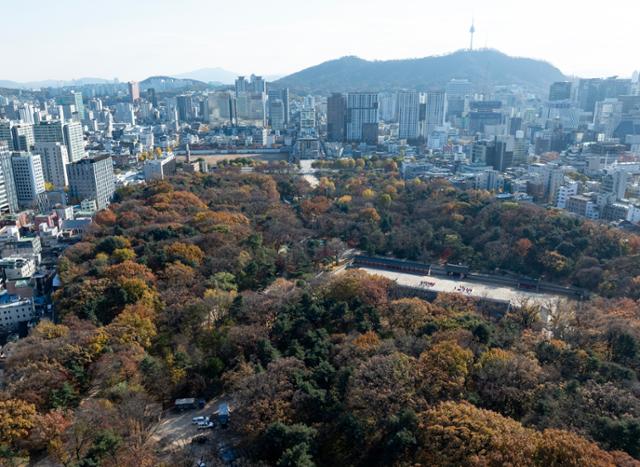“Seoul City and National Heritage Administration, Joint Evaluation by Experts”,

On the 18th, the redevelopment zone in Sewoon District 4 is visible beyond Jongmyo in Jongno-gu, Seoul. Yonhap News,
,
, ‘In relation to the controversy over high-rise development in front of UNESCO World Heritage Site Jongmyo, the Korea Committee of the International Council on Monuments and Sites (ICOMOS), an advisory organization of UNESCO, requested a joint Heritage Impact Assessment (HIA) from the government and Seoul City.’,
,
, ‘The ICOMOS Korea Committee, composed of Korean World Heritage experts, proposed a joint HIA involving Seoul City, the National Heritage Administration, and experts in a statement released on the 24th. The committee stated, “Looking at urban World Heritage cases worldwide, the most effective solution when there is a conflict is to conduct an HIA and, based on the results, receive a technical review from ICOMOS to find a mutually agreeable alternative scenario,” proposing a ‘joint impact assessment’ and the ‘official activation of international advisory procedures.’,
,
, ‘In response to Seoul City’s claim that there is no legal basis for conducting an HIA on Sewoon District 4 near Jongmyo, the committee stated, “The most important principle in the World Heritage system is to share information and seek consultation with the World Heritage Centre and advisory bodies sufficiently early before making irreversible decisions.” They emphasized, “This principle is clearly stipulated in Article 172 of the World Heritage Operational Guidelines and is a standard applied to all urban World Heritage sites worldwide, including Jongmyo.”‘,
,
, ‘Regarding concerns that the redevelopment of Sewoon District 4 may jeopardize Jongmyo’s World Heritage status, the committee said, “We do not judge the current situation at Jongmyo as immediately meeting the criteria for ‘World Heritage in Danger,'” but acknowledged that “there are concerns expressed by the World Heritage Centre and various experts due to the high-rise development plans, potential landscape axis damage, and insufficient coordination among related agencies.” They noted that “now is a stage where transparent and proactive procedural responses are needed.”‘,
,
, ‘Furthermore, the committee emphasized that the HIA is not a system to block development but a tool for making rational decisions that is recognized internationally. They explained, “The purpose of the impact assessment is not to unconditionally prohibit development but to compare and analyze various scenarios regarding height, placement, skyline, and viewlines to find an alternative where preservation and development can coexist.”‘

